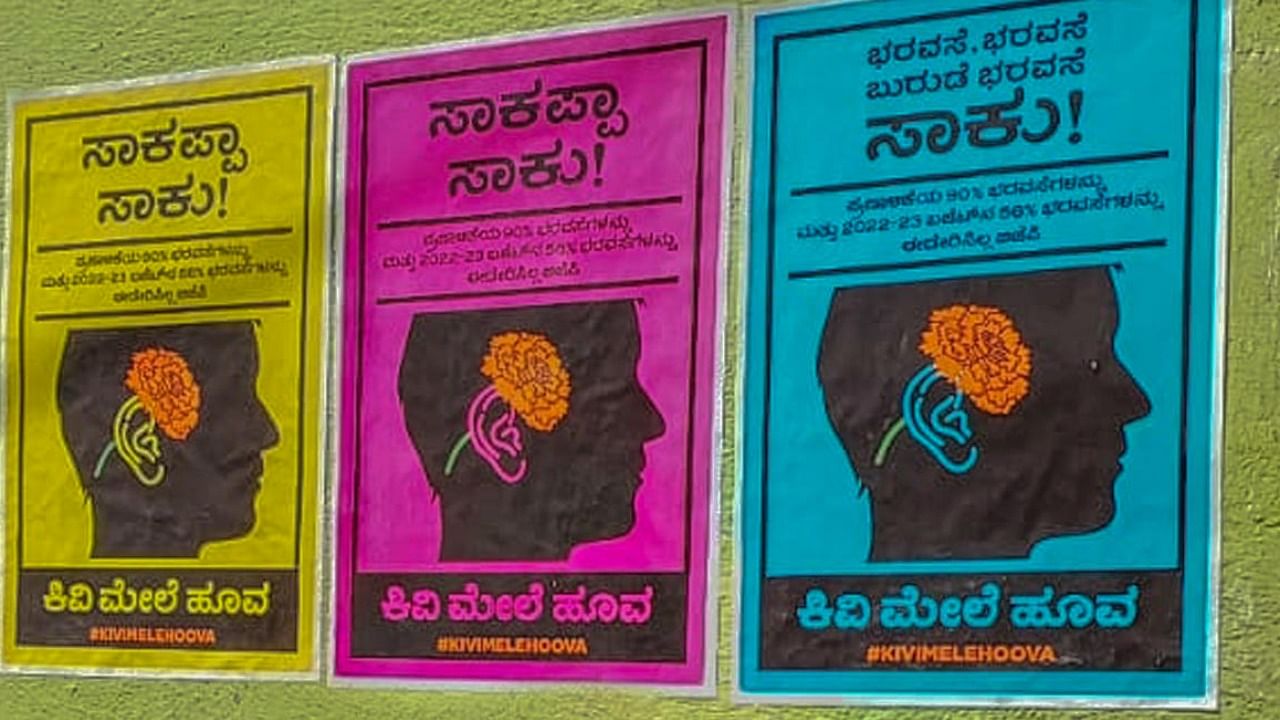
The Congress party started a Twitter campaign on Saturday with the hashtag ‘kivi mele hoova’ (flower on the ear). This follows the party leaders sporting marigold on their ears during Chief Minister Basavaraj Bommai’s budget presentation in the Assembly on Friday. The Karnataka budget 2023 is an “eyewash,” the party has alleged.
With Assembly polls drawing closer, political parties have amplified their social media campaigns.
Making use of data analytics, they are pushing a variety of online content, be it Twitter hashtags, Instagram videos or WhatsApp forwards. Parties bank on humour and sarcasm to gain and retain people’s attention in the virtual space.
Out of the 5.1 crore electorate in Karnataka, about 2 crore are on Facebook, 3.35 crore on WhatsApp and 1.12 crore on Instagram. More than 4.5 crore voters are on some social media platform, says former minister and Chittapur MLA Priyank Kharge, chairman, communications of KPCC, citing data available with his party.
Taking on the government with allegations of ‘40% commission in public works,’ the Congress earlier came up with the ‘PayCM’ hashtag. It also stuck posters with Bommai’s face and a QR code on it, leaving the CM red-faced.
The use of social media has become prominent after the 2014 parliamentary elections, points out Vijay Rao, chief relationships officer of Rajneethi political management consultants. However, content consumption has changed over the years. What works today is audio visual content within 30 seconds. The message has to be strong and short, he says.
Twitter works with urban voters, while parties use Facebook and WhatsApp to reach out to rural voters. The JD(S), which has a huge rural voter base depends on Facebook and YouTube, according to party’s social media chief Pratap Kanagal.
Parties also frequently find themselves trying to set the narrative straight when leaders make controversial statements.
JD(S) leader H D Kumaraswamy recently stoked controversy by claiming that Union Minister Pralhad Joshi was BJP’s CM candidate for the 2023 Assembly polls.
Unlike Brahmins native to Karnataka, Joshi comes from Peshwa Brahmin community, prone to stoking violence and supported by the RSS, he charged. Soon, the JD(S) war rooms put out posts to clarify that Kumaraswamy was not “anti-Brahmin”. They have a war room in each Assembly constituency, says Kanagal.
The Aam Aadmi Party was among the first to make use of social media for campaigning with its India Against Corruption movement.
However, social media platforms have commercialised over time and have become expensive, points out AAP’s state convenor Prithvi Reddy.
“It’s not affordable for parties working with limited budget. One has to invest money to advertise and push content on these platforms.” Coming up with an affordable solution, AAP is relying on ‘missed call’ campaign and interactive voice response (IVR) campaigns to rope in people into their network.
“Once they are part of our network, we can disseminate information through WhatsApp groups,” he says.
“Our primary strategy is to use social media for positive campaigning. We will use short videos, live videos and infographs to convey our development agenda. The Congress and JD(S) have no ground and hence, they are coming up with silly online campaigns. We have no need to attack another party as we have enough achievements to showcase to the public,” Vikas Puttur, chief, digital media cell of BJP Karnataka.
